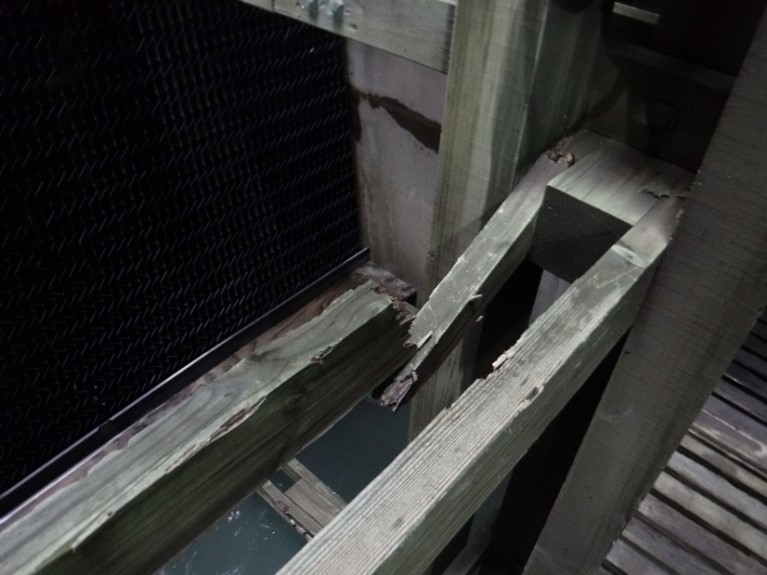How to Prioritize Cooling Tower Repairs
In Part 1 of this series we explored the importance of investing in cooling tower maintenance. Part 2 focused on what to expect while planning and executing a cooling tower inspection. In Part 3, we explored the benefit of having inspection data in cooling tower maintenance. In Part 4 of this series, we will focus on how to prioritize the repairs on cooling tower structures for construction execution.
Prioritizing Repairs
Prioritizing repairs play an important role in improving the reliability of cooling towers and eliminating additional costs associated with making unnecessary repairs. Brindley Engineering performs detailed inspections of cooling water systems and provides quantitative inspection data that proves valuable to owners for scheduling repairs and allocating resources appropriately. In general, repairs are executed cell-by-cell due to operational constraints for outages.
Tier 1: Safety, Budget, and Schedule
The three most important factors that can impact the overall planning are worker safety, budget, and schedule alignment with outages. Whether the goal is to increase efficiency of the system or to extend the design life of the structure, data collected from initial inspections allows for aggressive planning while still leaving room for unexpected findings during repairs.
Cooling Tower Interior Inspection
In general, the interior inspection includes:
- checking of sludge levels in the basin floors
- walkway inspections
- deterioration of partition walls between the cells
- section loss / deterioration / moisture content
- splitting of beams, columns, splices
- types of members in the cell, types of connections used, any missing bolts in the connection
Cooling Tower Exterior Inspections
An exterior inspection includes checking for fills, louvers, louver arms, concrete basin, staircase, distribution decks, fan decks, shroud structure, partition walls, wear, and tear of all the members accessible from outside.

Risk Assessment
All deficiencies are risk-assessed based on the severity of the defect and likelihood of failure. The severity of the defect is based on the impact to the operation of the cooling tower or personnel safety if the member fails. The likelihood of the defect is based on how likely the defect will progress to a point of failure. All deficiencies are evaluated from a global perspective to prioritize and most effectively plan repair work based on the risk (= severity x likelihood) associated to it. Individual defect locations are packaged together into work zones and prioritized based on risk to optimize the repair budget and maximize execution efficiency. Highest risk work zones are then prioritized based on the cumulative risk.
– Gourav Patodi, Brindley Engineering Structural Engineer,
Read Part 1: Industrial Cooling Tower Maintenance
Read Part 2: Industrial Cooling Tower Inspections
Read Part 3: Cooling Tower Structural Analysis
Read Part 5: Cooling Tower Preventative Maintenance


0 Comments